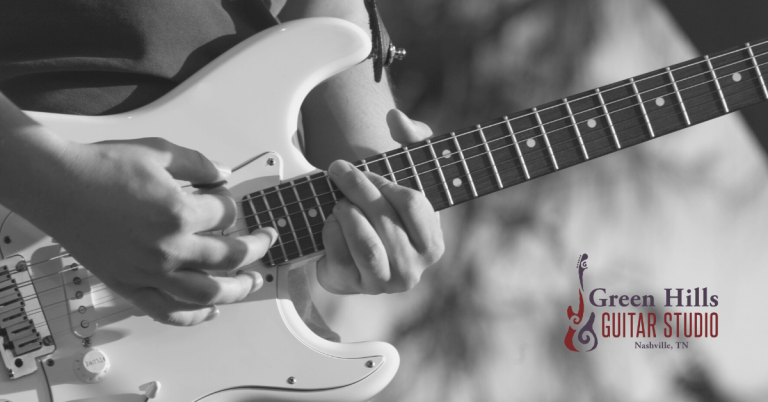The Art of Dynamics: Bringing Emotion to Your Guitar Playing
Dynamics are the variations in volume and intensity that breathe life into a piece of music. For guitarists, mastering dynamics is essential not just for technical proficiency, but for expressing emotion, creating contrast, and captivating listeners.
Whether you’re playing solo or in a band, understanding and utilizing dynamics can significantly enhance your performance, making your music more engaging and impactful.
In this article, we’ll explore why dynamics matter and how you can incorporate them into your guitar playing. We will also provide examples of guitarists who demonstrate the power of dynamics in their music.
Let’s get into it!
What Are Dynamics in Music?
Dynamics refer to the fluctuations in volume and intensity within a musical piece. These are often indicated by terms like piano (soft), forte (loud), crescendo (gradually getting louder), and decrescendo (gradually getting softer).
In guitar playing, dynamics can be manipulated through various techniques, such as varying your picking strength, adjusting the volume knob, or using effects pedals.
Why Are Dynamics Important for Guitarists?
Dynamics are a crucial element in conveying emotion and storytelling through music. Without dynamics, music can sound monotonous and flat.
By varying the volume and intensity, you create contrasts that draw attention to specific parts of a song, punctuate phrases, and maintain the listener’s interest.
For example, the difference between a softly fingerpicked verse and a forcefully strummed chorus can create a powerful emotional shift, pulling the listener deeper into the music.
Dynamics add variety to your playing and help convey the emotions and messages behind the music.
Practical Techniques to Incorporate Dynamics in Guitar Playing
1. Control Your Picking Attack
Your picking attack—the force with which you strike the strings—directly affects the dynamics of your playing. A gentle touch produces a soft, mellow tone, while a stronger attack results in a louder, more assertive sound.
Practice playing the same passage with varying levels of attack to develop control over your dynamics. For instance, experiment with different pick thicknesses to see how they affect your ability to control dynamics.
2. Roll Back the Volume Knob
The volume knob on your electric guitar is a simple yet effective tool for controlling dynamics. Rolling the volume down can create a softer sound, ideal for verses or intros while turning it up adds power and presence for choruses or solos.
This technique is particularly effective when combined with overdrive or distortion pedals, allowing for smooth transitions between clean and distorted tones.
To practice, try playing a simple melody while slowly adjusting the volume knob to observe how it changes the texture and emotional impact of the notes.
3. Experiment with Palm Muting
Palm muting involves resting the side of your picking hand on the strings near the bridge, producing a muted, percussive sound. It sounds fantastic with power chords, by the way!
By varying the pressure, you can control the level of muting and create dynamic contrasts within a song. For example, you can use palm muting during verses for a subdued effect and lift the muting for a full, open sound during choruses (Green Day has entered the chat).
This technique is widely used in genres like rock and metal, where dynamic contrast can heighten the impact of a song’s heavier sections.
4. Switch Between Fingerpicking and Strumming
Fingerpicking typically produces a quieter, more intimate sound, while strumming produces a louder, more rhythmic tone.
By alternating between these techniques, you can create dynamic contrasts that enhance the emotional impact of your music.
Try starting a song with gentle fingerpicking and gradually building to an energetic strumming pattern. For example, in folk and classical guitar to create delicate, intricate melodies, while strumming can introduce a more robust and energetic feel.
5. Incorporate Pedals and Effects
While dynamics are often thought of in terms of picking strength and volume control, effects pedals can also play a significant role.
A compressor pedal can help smooth out your dynamic range, making softer notes more audible and preventing louder notes from becoming overwhelming.
Volume pedals allow you to control dynamics in real time without altering your picking technique, and modulation effects like delay and reverb can add depth and dimension to quieter passages.
Experiment with different pedal settings to see how they can enhance your control over dynamics and contribute to the overall mood of your playing.
How Iconic Guitar Players Use Dynamics to Create Excitement
Understanding dynamics is not just about varying volume. It’s about using variations to create emotional depth and nuance in your music. Let’s explore how some iconic guitarists—Bill Frisell, Julian Lage, Tony Rice, Chris Eldridge, and Nels Cline—use dynamics to bring their music to life.
1. Bill Frisell: Subtlety and Space
Bill Frisell is known for his ability to create vast soundscapes with just a few notes, often relying on dynamics to convey emotion.
In his rendition of “Over the Rainbow,” Frisell demonstrates masterful control over dynamics by starting with a soft, almost whispering touch on the strings, allowing the notes to breathe and linger in the air.
As the piece progresses, he gradually increases his attack and intensity, bringing more volume and expression to the melody. This gradual shift from soft to loud highlights the song’s emotional journey and draws the listener in, making each note feel deliberate.
Frisell’s use of dynamics is not just about volume; it’s about articulation. He varies his touch to create different textures, from smooth, sustained notes to sharp, percussive accents. By doing so, he tells a story through his guitar, using dynamics to guide the listener’s emotional response.
2. Julian Lage: Precision and Fluidity
Julian Lage’s playing is often celebrated for its clarity and precision, and dynamics play a significant role in this.
In tracks like “Nocturne,” Lage demonstrates his dynamic range by moving seamlessly between gentle, fingerpicked passages and more assertive, strummed sections.
His ability to modulate his picking intensity allows him to effortlessly shift the mood of the piece, going from introspective to exuberant within a single phrase.
Lage also uses dynamics to emphasize phrasing. By varying the volume of individual notes within a run, he creates a sense of forward motion and storytelling.
For example, he might start a phrase softly, gradually increasing in volume to build tension, and then release it with a softer, resolving note. This control over dynamics showcases his technical skill and enhances his music’s emotional impact.
3. Tony Rice: Clarity and Power in Acoustic Guitar
Tony Rice, one of the most influential flatpicking guitarists in bluegrass, is renowned for his dynamic playing style. In his “Church Street Blues” performance, Rice’s use of dynamics is evident from the beginning.
He starts with a delicate, cross-picked intro, allowing the melody to emerge gently. Then, as the song progresses, he shifts to a more forceful, flatpicking style, increasing the volume and intensity to drive the rhythm forward.
Rice’s dynamic range allows him to make his acoustic guitar sing, producing clear, bell-like tones at softer volumes and robust, resonant chords when playing louder.
His ability to switch between these dynamic extremes adds a compelling contrast to his music, keeping listeners engaged and highlighting the emotional peaks and valleys of the song.
4. Chris Eldridge: Articulation and Expression
Chris Eldridge, known for his work with Punch Brothers and his collaborations with Julian Lage, exemplifies how dynamics can effectively articulate musical ideas.
In the track “The Farmer,” Eldridge showcases his dynamic control by alternating between soft, intricate fingerpicking and more pronounced, rhythmically driven strumming. This dynamic interplay adds texture to the music and emphasizes the song’s narrative elements.
Eldridge’s use of dynamics is often subtle, focusing on the nuances of articulation. He might slightly increase the volume of a specific note to make it stand out or decrease it to blend it smoothly into a phrase.
This attention to detail in dynamics allows him to communicate complex emotions and ideas through his playing, making each performance unique and engaging.
5. Nels Cline: Tension and Release
Nels Cline’s guitar work on Wilco’s “Impossible Germany” is a masterclass in using dynamics to build tension and release in a guitar solo. The solo begins with a restrained, slightly overdriven tone, where Cline uses gentle picking and butterfly-like vibrato to create a sense of anticipation.
As the solo progresses, he gradually increases the intensity of his playing, moving from delicate, melodic lines to a powerful, overdriven solo that soars with emotional depth.
Cline’s dynamic control allows him to create a narrative within the solo, starting with understated phrasing that draws the listener in, and then building to a climactic peak where his guitar takes on a more aggressive, soaring tone.
This use of dynamics enhances the song’s structure and elevates its emotional impact, making the solo one of the most memorable in modern rock.
Applying These Concepts to Your Playing
By studying how these iconic guitarists use dynamics, you can learn to incorporate similar techniques into your own playing.
Start by experimenting with your picking attack, vary your volume control, and practice articulating phrases with different levels of intensity. Pay attention to how these changes affect the mood and emotion of your music.
Mastering dynamics isn’t just about playing louder or softer—it’s about using these variations to express yourself more fully and connect with your audience on a deeper level.
Whether you’re playing a solo piece or with a group, dynamics will help you tell a more compelling musical story.
The Coda
Mastering dynamics in your guitar playing is a journey that will deepen your connection to music and enhance your ability to convey emotion.
By incorporating these techniques into your practice, you’ll develop a more expressive and versatile playing style that resonates with listeners and keeps your music fresh and engaging.
If you’re ready to take your guitar playing to the next level and master the art of dynamics, Green Hills Guitar Studio is here to help. Our experienced instructors offer personalized lessons tailored to your musical goals.
Whether you’re interested in private guitar lessons or want access to our comprehensive library of courses, our All Access Pass has everything you need to succeed.
Let’s make music together!






